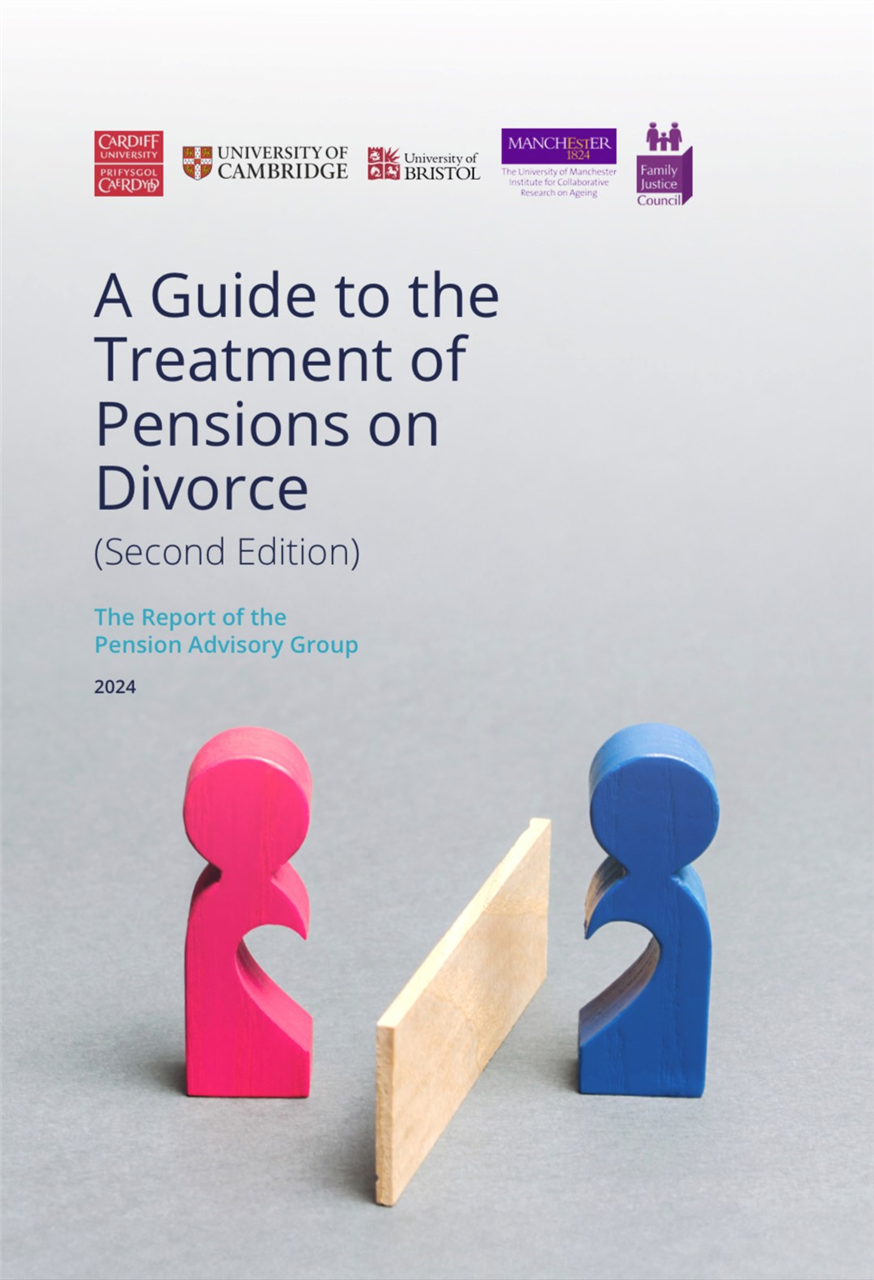
Some Reflections on the Launch of the Second Edition of the Pension Advisory Group Guide to Pensions on Divorce
Published: 20/12/2023 10:48

The Pension Advisory Group have just published a second edition of their Guide to the Treatment of Pensions on Divorce1 – ‘PAG2’.
The first edition was published in July 2019. A lot has happened since then.
The report was due a refresh, with the intention of extending the half-life of its influence in this knotty area of family law.
Since July 2019 the following pensions on divorce issues are of note:
- Continued debate in caselaw as to how pensions on divorce should be approached. PAG2 perhaps wears its heart on its sleeve a little more than the original PAG report. There is not a definitive and simple answer to all problems and the PAG2 report readily acknowledges that.
- The publication of the Galbraith Tables, a ready reckoner to suggest the gross value of a defined benefit pension by reference to the benefits that will be received and the age of the recipient. They receive a cautious welcome by the PAG2 as a useful starting point. At A Glance are publishing them and their wide adoption appears inevitable.
- The abolition of the Lifetime Allowance, but with the possibility of return if there is a change of government.
- McCloud issues and remedies with public sector 2015 schemes. Much remains to be played out in this arena.
- The loss of the Forum Necessitatis jurisdiction with the advent of Brexit. Absent of legislation, there is nothing to be done.
- A revised template order and change of language brought about by the Divorce, Dissolution and Separation Act 2020.
- Lewis v Cunningtons Solicitors [2023] EWHC 822 (KB), a negligence case with general implications for the practice of family law, particularly those who offer unbundled services, played out in the context of a failure to advise properly about pensions.
- The need to be mindful of the wild fluctuation in the value of defined benefit pensions largely caused by Liz Truss’s brief premiership.
The PAG has its fans and critics. The PAG2 allowed for the PAG to reflect on the laurels and the brickbats and to generally update and improve the guidance. There are no major changes in approach, the PAG2 is an evolution and not a revolution.
The PAG’s critics tend to come from the direction of ‘big money’. When confronted with a pile of millions, it would be rare that the valuation of a pension will hold the balance of fairness in the case. However, for the average citizen the proper valuation and understanding of a defined benefit pension may hold the key to fairness, in a case where the main assets are only a house and a pension. Ordinary money issues may seem distant and blurred through the telescope of big money.
Financial remedies have always had the ‘broad brush’ in its armoury and the PAG would contend that bringing to bear a proper understanding of the value of pensions does not prevent a broad s 25 discretion from being exercised.
A reading of chapter 7 of the important Fair Shares Report,2 which deals with pensions on divorce, provides the grim satisfaction that there is still much work to be done in this area. Too often pensions are not understood, or they are emotionally considered by an applicant (commonly the wife) to be the unassailable property of the person who earned them (commonly the husband), rather than just a matrimonial asset. Pensions can appear too complex to deal with at the turbulent time of divorce. The applicant may not properly appreciate the potential importance and issues at stake for their retirement. For as long as family law fails to counter the technical and emotional misunderstanding of the proper place of a pension in a divorce settlement, an issue of systemic gender discrimination appears to be lurking in the shadows.
The update has been much more of a slog than might have been expected. Financial assumptions and the correct legal approach to be adopted have been debated long and hard. It is hoped that the PAG2 will have performed some of the heavy lifting when practitioners encounter contentious pension issues in practice.
What next?
Law for Life/AdviceNow will refresh its litigant in person guide in the first part of 2024.
Following the first PAG report the PODEs continued their discussions with bi-annual meetings to check that the key players in the field were all aware of developments and acting as something of an informal professional accountability group. It is hoped that this may continue in some form.
The emergence of experts who appear to not possess the appropriate expertise to provide PODE reports is something of a concern and beyond the bailiwick of the PAG2 to do anything about. Practitioners should remain vigilant.
Lewis v Cunningtons suggests that all solicitors should be routinely serving a Pension Enquiry Form in Form P. This form has not been updated since pension sharing was first introduced and is not really fit for purpose. It is hoped this is something that may be considered by the Family Procedure Rule Committee going forwards. A form which enables parties, lawyers and judges to obtain as much useful and relevant information must surely be for the good. Further, basic issues like direct contact details for pensions on divorce departments could be usefully included on a revised Form P.
A farewell to Hilary Woodward
Hilary Woodward, who has been the PAG’s beating heart, is going to finally retire. Family Law owes her a debt of gratitude for the immense and unique contribution she has made in this area. She now heads off into her garden to contend with different kinds of apples and pears. The PAG will have lost its rudder and is expected will go into something of a hibernation. Professor Emma Hitchings has very kindly agreed to act as a point of contact.
We trust that the PAG2 PDF will find its place on your desktops and be of use in practice generally.
There will be an interview with Hilary Woodward at the Spring Edition of the FRJ.









